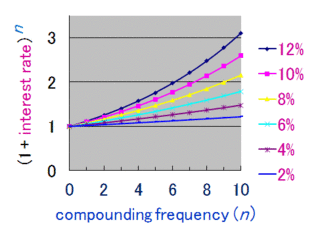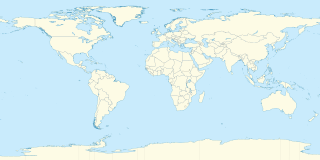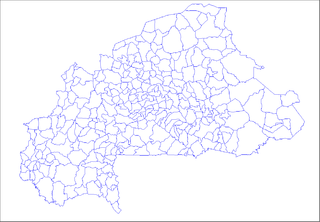
The duodecimal system is a positional notation numeral system using twelve as its base. The number twelve is instead written as "10" in duodecimal, whereas the digit string "12" means "1 dozen and 2 units". Similarly, in duodecimal "100" means "1 gross", "1000" means "1 great gross", and "0.1" means "1 twelfth".

The number e is a mathematical constant that is the base of the natural logarithm: the unique number whose natural logarithm is equal to one. It is approximately equal to 2.71828, and is the limit of (1 + 1/n)n as n approaches infinity, an expression that arises in the study of compound interest. It can also be calculated as the sum of the infinite series
In mathematics, the factorial of a positive integer n, denoted by n!, is the product of all positive integers less than or equal to n. For example,
ISO 8601Data elements and interchange formats – Information interchange – Representation of dates and times is an international standard covering the exchange of date- and time-related data. It was issued by the International Organization for Standardization (ISO) and was first published in 1988. The purpose of this standard is to provide an unambiguous and well-defined method of representing dates and times, so as to avoid misinterpretation of numeric representations of dates and times, particularly when data are transferred between countries with different conventions for writing numeric dates and times.

In mathematics, a Taylor series is a representation of a function as an infinite sum of terms that are calculated from the values of the function's derivatives at a single point.
The slash is an oblique slanting line punctuation mark. Once used to mark periods and commas, the slash is now most often used to represent exclusive or inclusive or, division and fractions, and as a date separator. It is called a solidus in Unicode, is sometimes known as a stroke in British English, and it has several other historical or technical names, including oblique and virgule.

The Euler–Mascheroni constant is a mathematical constant recurring in analysis and number theory, usually denoted by the lowercase Greek letter gamma.

Compound interest is the addition of interest to the principal sum of a loan or deposit, or in other words, interest on interest. It is the result of reinvesting interest, rather than paying it out, so that interest in the next period is then earned on the principal sum plus previously accumulated interest. Compound interest is standard in finance and economics.

In geology, the places known as hotspots or hot spots are volcanic regions thought to be fed by underlying mantle that is anomalously hot compared with the surrounding mantle. Their position on the Earth's surface is independent of tectonic plate boundaries. There are two hypotheses that attempt to explain their origins. One suggests that hotspots are due to mantle plumes that rise as thermal diapirs from the core–mantle boundary. The other hypothesis is that lithospheric extension permits the passive rising of melt from shallow depths. This hypothesis considers the term "hotspot" to be a misnomer, asserting that the mantle source beneath them is, in fact, not anomalously hot at all. Well-known examples include the Hawaii, Iceland and Yellowstone hotspots.

The European route E 22 is one of the longest European routes. It has a length of about 5,320 km (3,310 mi). Many of the E-roads have been extended into Asia since the year 2000; the E 22 was extended on 24 June 2002.

The 45×90 points are the four points on earth which are halfway between the geographical poles, the equator, the Prime Meridian, and the 180th meridian.

Baingoin County is a county within Nagqu of the Tibet Autonomous Region.
Bossongri is a town in the Bilanga Department of Gnagna Province in eastern Burkina Faso. The town has a population of 2,040.
Doundougou is a village in the Bilanga Department of Gnagna Province in eastern Burkina Faso. The village has a population of 309.
Boudangou is a town in the Manni Department of Gnagna Province in eastern Burkina Faso. The town has a population of 4,653.
Margou is a village in the Manni Department of Gnagna Province in eastern Burkina Faso. The village has a population of 641.

In probability theory and statistics, the Poisson distribution, named after French mathematician Siméon Denis Poisson, is a discrete probability distribution that expresses the probability of a given number of events occurring in a fixed interval of time or space if these events occur with a known constant rate and independently of the time since the last event. The Poisson distribution can also be used for the number of events in other specified intervals such as distance, area or volume.
Namoungou is a village in the Piéla Department of Gnagna Province in eastern Burkina Faso. The village has a population of 497.
In statistics, the Jonckheere trend test is a test for an ordered alternative hypothesis within an independent samples (between-participants) design. It is similar to the Kruskal–Wallis test in that the null hypothesis is that several independent samples are from the same population. However, with the Kruskal–Wallis test there is no a priori ordering of the populations from which the samples are drawn. When there is an a priori ordering, the Jonckheere test has more statistical power than the Kruskal–Wallis test. The test was developed by A. R. Jonckheere, who was a psychologist and statistician at University College London.















